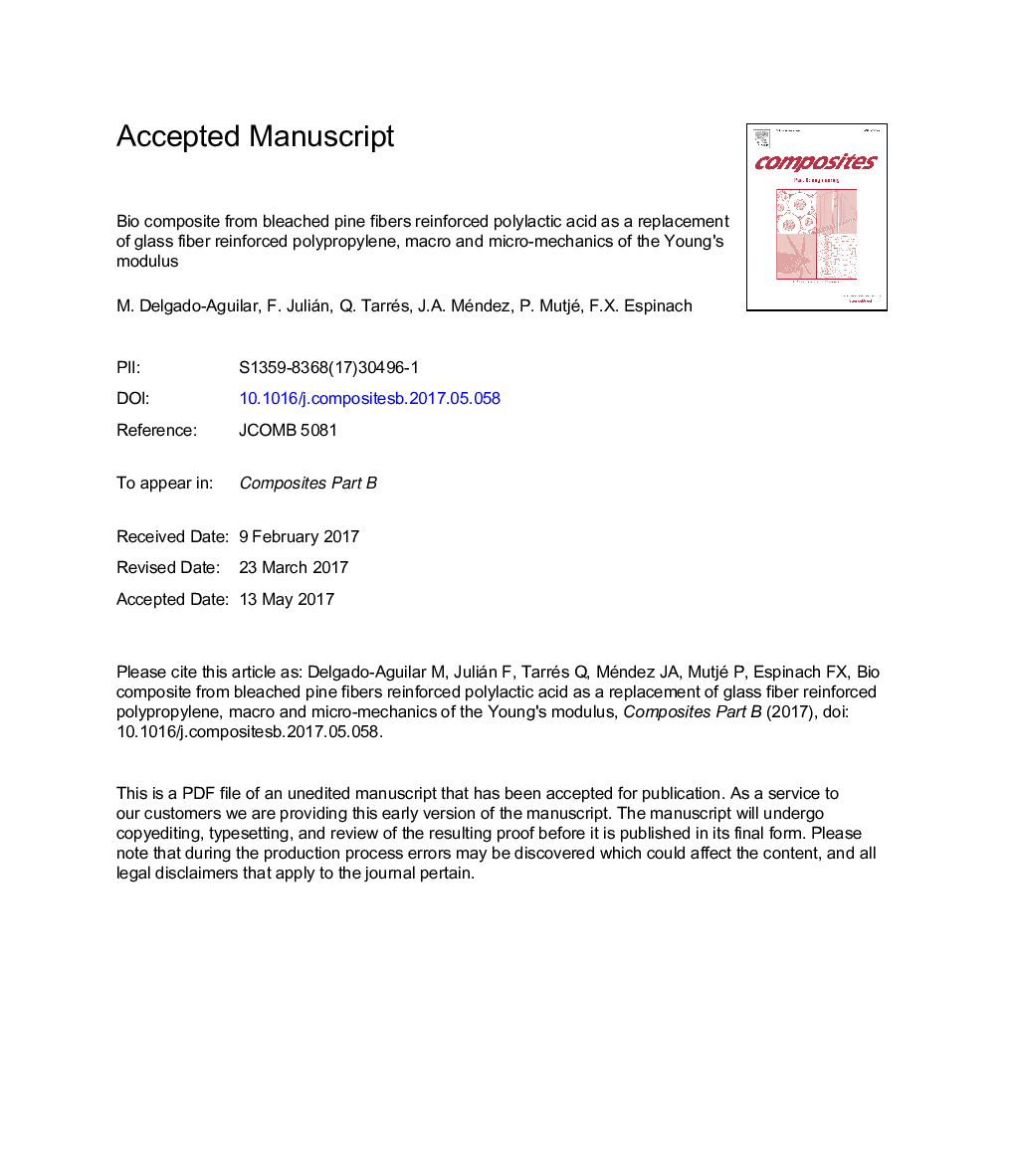| Article ID | Journal | Published Year | Pages | File Type |
|---|---|---|---|---|
| 5021587 | Composites Part B: Engineering | 2017 | 22 Pages |
Abstract
The search of more environmentally friendly material is not an end in itself. Such materials must also show competitive mechanical properties, comparative prices and a good adaptation to the manufacture processes. Nowadays, Glass fibers had been traditionally used as reinforcement of polyolefin for mold injected products. Natural fibers and non-oil-based polymers are seen as possible replacements. Nonetheless, the substitution of a mineral reinforcement or an oil-based matrix by renewable alternatives is not enough. From an engineering point of view, stiffness is one of the most relevant properties of composite materials. In this work, commercial Kraft Bleached pine fibers were used as reinforcement for a polylactic acid-based thermoplastic. Composite materials with 15-35% w/w of reinforcing fibers were prepared, mechanically characterized, and compared with polypropylene-based composites. A fiber tensile modulus factor was defined in order to characterize the net contribution of the fibers to the Young's moduli of the composites. The intrinsic Young's modulus of the fibers was back calculated by means of the Hirsch model, and its matrix dependence or independence was examined. The moduli were also obtained by Halpin-Tsai equations with Tsai-Pagano methods and then compared to establish the influence of the aspect ratio.
Related Topics
Physical Sciences and Engineering
Engineering
Engineering (General)
Authors
M. Delgado-Aguilar, F. Julián, Q. Tarrés, J.A. Méndez, P. Mutjé, F.X. Espinach,
